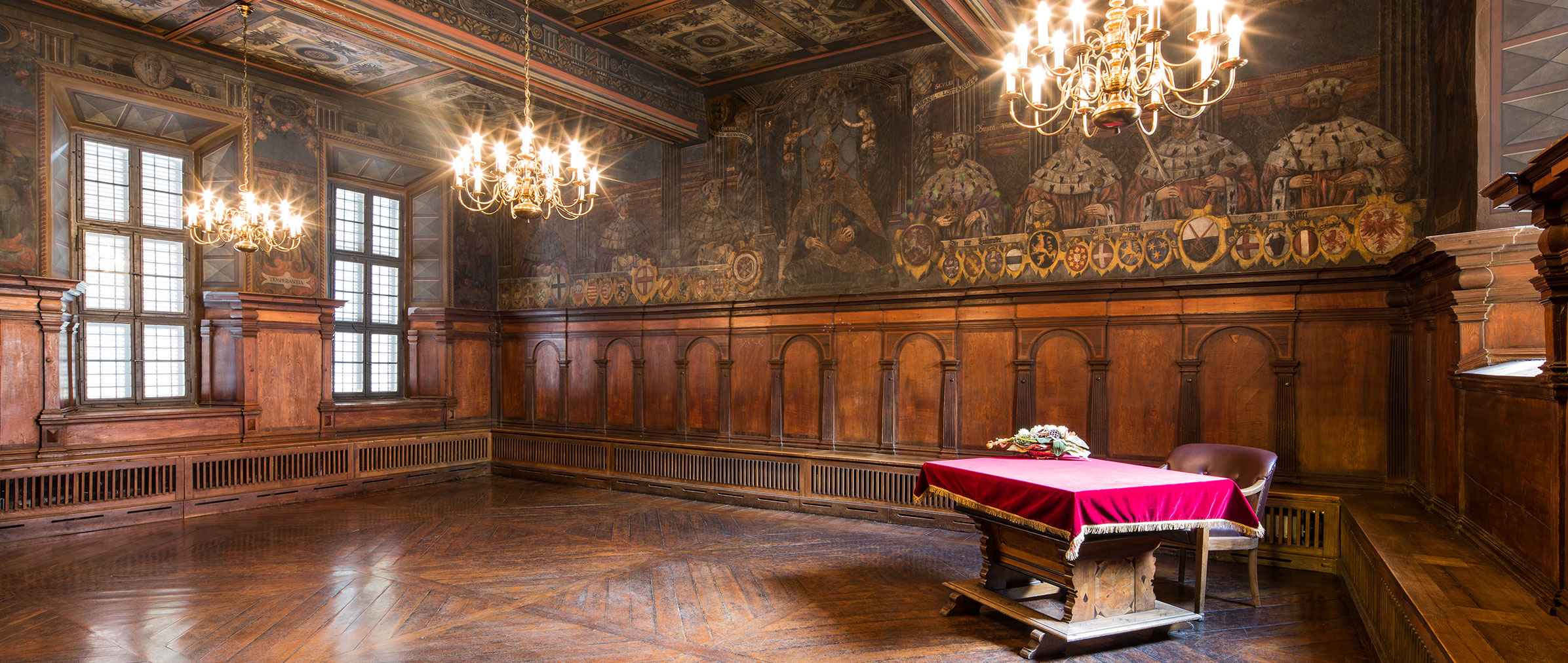Small Imperial Cities
Mühlhausen|Thüringen, 20th February – 22th February 2023
Tenth academic conference of the Mühlhausen-based Working Group “History of the Free Imperial Cities”, in cooperation with the Friedrich Christian Lesser Foundation and the Historical Society of Mühlhausen (Mühlhäuser Geschichts- und Denkmalpflegeverein e. V.)
Conception
The tenth conference of the Mühlhausen-based Working Group “History of the Free Imperial Cities” will be dedicated to the small Imperial Cities. Although small towns made up the majority of urban life in medieval and early modern Europe they play a subordinate role in the historical research of cities in these times. This also applies to the research on Imperial Cities, which traditionally concentrates on the larger cities, the so-called Free Imperial Cities. This conference addresses this desideratum, focusing specifically on smaller Imperial Cities from a comparative perspective.
“Small” cannot and should not be defined by posing a fixed upper population limit – although the range of 2,000 to 5,000 inhabitants for “kleine Mittelstädte,“ as suggested by Hektor Ammann, provides a useful starting point. What we would like to do instead is to examine cities which do not belong to the “usual suspects” of Imperial Cities researched. Moreover, the focus will be on specific characteristics, (self-)representations and practices of smaller Imperial Cities, and on comparisons among each other as well as to their larger cousins.
Approaching the phenomenon of the small Imperial Cities by looking at various examples, we will discuss their economic and social foundations, consider their representations in travel journals and introducing the smallest of them all – the “Imperial villages”. In the section “Small Imperial Cities and textuality“ we will ask how small Imperial Cities presented, organised and administered themselves – usually without showing up in chronicles and other written (administrative) documents as is the case with their larger cousins. This leads to the question of what is unique to small Imperial Cities in comparison to small territorial cities, which were subordinate to a territorial prince. Another section introduces various case studies on their role in the regional and imperial context and on the transition of the Imperial Cities of Alsace Lorraine to the sovereignty under the French crown. The final section will bring all these findings together and put them up for discussion.
Table of contents and foreword of the conference publication
Studien zur Reichsstadtgeschichte (SRG) are published by Michael Imhof Verlag.
Here you can find an overview of all conferences.
